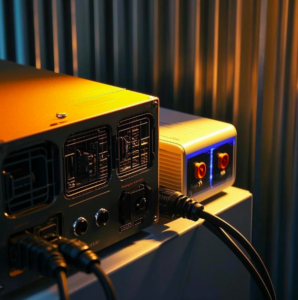In the world of electrical distribution, a branch feeder monitor serves as a crucial component in ensuring efficient power management. This article delves into what a branch feeder monitor is, its advantages, working principles, and applications.
What is a Branch Feeder Monitor?
A branch feeder monitor is an electrical device designed to track and manage the power flow in branch circuits within a larger electrical distribution system. Its primary function is to provide real-time data on power usage, helping to identify inefficiencies, potential faults, and overall system performance. Monitoring individual branch circuits, it allows for precise management and optimization of power distribution.

Advantages of Using a Branch Feeder Monitor
Implementing a branch feeder monitor offers several key benefits:
Improved Efficiency: By providing detailed insights into power consumption patterns, a branch feeder monitor helps in identifying areas where energy usage can be optimized. This leads to reduced energy waste and lower operational costs.
Enhanced Reliability: Continuous monitoring allows for early detection of potential issues, such as overloading or faults in specific branch circuits. This proactive approach helps in maintaining system reliability and preventing unexpected downtime.
Better Decision Making: Access to real-time data enables facility managers to make informed decisions regarding energy usage and distribution. This data-driven approach supports strategic planning and resource allocation.
How Does a Branch Feeder Monitor Work?
The working principle of a branch feeder monitor involves several key components and processes:
Sensors: The device is equipped with sensors that measure electrical parameters such as voltage, current, and power factor. These sensors are installed on individual branch circuits to collect precise data.
Data Collection and Analysis: The collected data is transmitted to a central processing unit, where it is analyzed in real-time. Advanced algorithms process this information to identify patterns, trends, and anomalies.
User Interface: The processed data is displayed on a user interface, providing facility managers with a clear and comprehensive view of the system’s performance. Alerts and notifications can be configured to inform users of any potential issues.
Applications of Branch Feeder Monitors
Branch feeder monitors are used in a variety of settings, including:
Commercial Buildings: In large commercial facilities, monitoring power distribution to various branches ensures optimal energy usage and prevents overloading.
Industrial Plants: In industrial settings, where power demands are high and constant, branch feeder monitors play a critical role in maintaining operational efficiency and reliability.
Data Centers: With the high energy consumption of data centers, accurate monitoring of branch circuits is essential for managing power distribution and ensuring uptime.
Hospitals: Ensuring reliable power supply in hospitals is crucial. Branch feeder monitors help in maintaining continuous power flow to critical areas.
In summary, a branch feeder monitor is an indispensable tool for efficient power management. Its ability to provide detailed insights, enhance reliability, and support strategic decision-making makes it a valuable asset in various applications. By understanding its advantages and working principles, businesses can leverage this technology to achieve optimal energy usage and operational efficiency.
